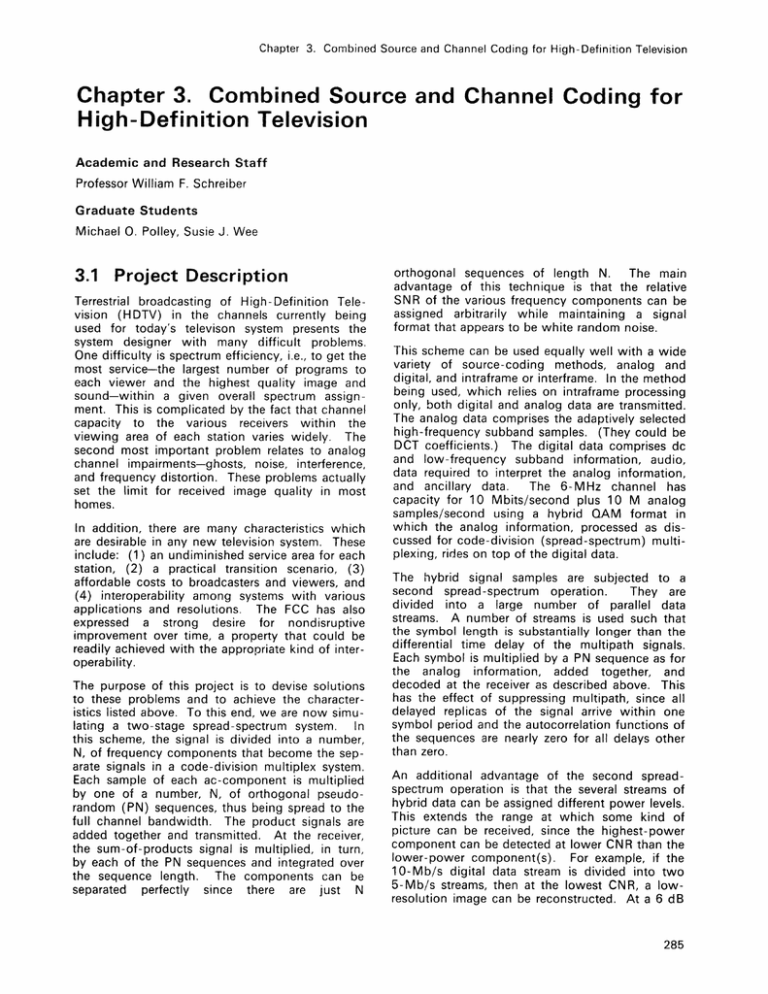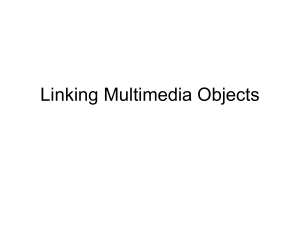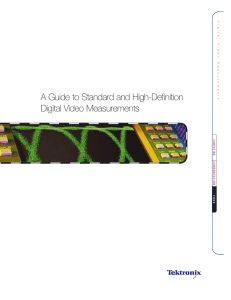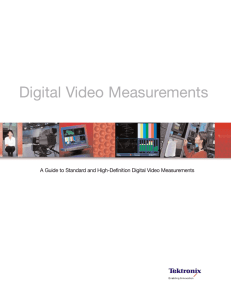High-Definition Television 3.1 Project Description
advertisement

Chapter 3. Combined Source and Channel Coding for High-Definition Television Chapter 3. Combined Source and Channel Coding for High-Definition Television Academic and Research Staff Professor William F. Schreiber Graduate Students Michael O. Polley, Susie J. Wee 3.1 Project Description Terrestrial broadcasting of High-Definition Television (HDTV) in the channels currently being used for today's televison system presents the system designer with many difficult problems. One difficulty is spectrum efficiency, i.e., to get the most service-the largest number of programs to each viewer and the highest quality image and sound-within a given overall spectrum assignment. This is complicated by the fact that channel capacity to the various receivers within the viewing area of each station varies widely. The second most important problem relates to analog channel impairments-ghosts, noise, interference, and frequency distortion. These problems actually set the limit for received image quality in most homes. In addition, there are many characteristics which are desirable in any new television system. These include: (1) an undiminished service area for each station, (2) a practical transition scenario, (3) affordable costs to broadcasters and viewers, and (4) interoperability among systems with various applications and resolutions. The FCC has also expressed a strong desire for nondisruptive improvement over time, a property that could be readily achieved with the appropriate kind of interoperability. The purpose of this project is to devise solutions to these problems and to achieve the characteristics listed above. To this end, we are now simulating a two-stage spread-spectrum system. In this scheme, the signal is divided into a number, N, of frequency components that become the separate signals in a code-division multiplex system. Each sample of each ac-component is multiplied by one of a number, N, of orthogonal pseudorandom (PN) sequences, thus being spread to the full channel bandwidth. The product signals are added together and transmitted. At the receiver, the sum-of-products signal is multiplied, in turn, by each of the PN sequences and integrated over the sequence length. The components can be separated perfectly since there are just N orthogonal sequences of length N. The main advantage of this technique is that the relative SNR of the various frequency components can be assigned arbitrarily while maintaining a signal format that appears to be white random noise. This scheme can be used equally well with a wide variety of source-coding methods, analog and digital, and intraframe or interframe. In the method being used, which relies on intraframe processing only, both digital and analog data are transmitted. The analog data comprises the adaptively selected high-frequency subband samples. (They could be DCT coefficients.) The digital data comprises dc and low-frequency subband information, audio, data required to interpret the analog information, and ancillary data. The 6-MHz channel has capacity for 10 Mbits/second plus 10 M analog samples/second using a hybrid QAM format in which the analog information, processed as discussed for code-division (spread-spectrum) multiplexing, rides on top of the digital data. The hybrid signal samples are subjected to a second spread-spectrum operation. They are divided into a large number of parallel data streams. A number of streams is used such that the symbol length is substantially longer than the differential time delay of the multipath signals. Each symbol is multiplied by a PN sequence as for the analog information, added together, and decoded at the receiver as described above. This has the effect of suppressing multipath, since all delayed replicas of the signal arrive within one symbol period and the autocorrelation functions of the sequences are nearly zero for all delays other than zero. An additional advantage of the second spreadspectrum operation is that the several streams of hybrid data can be assigned different power levels. This extends the range at which some kind of picture can be received, since the highest-power component can be detected at lower CNR than the lower-power component(s). For example, if the 10-Mb/s digital data stream is divided into two 5-Mb/s streams, then at the lowest CNR, a lowresolution image can be reconstructed. At a 6 dB 285 Chapter 3. Combined Source and Channel Coding for High-Definition Television higher CNR, all 10 Mb/s plus 5 Msamples/second are recoverable, making a better picture, while another 6 dB gives all 10 Msamples/second. A soft threshold of this type is essential for high spectrum efficiency when transmission of each signal is from a single centrally located transmitter, since this arrangement results in widely varying SNR at the various receivers. Code-division multiplex permits the transmission of components whose total bandwidth is larger than the channel bandwidth, at the cost of lower 286 RLE Progress Report Number 134 SNR in the recovered image. Thus, more than 10 Msamples/second can be transmitted, giving a soft threshold and a graceful degradation of quality with distance. By extension, it is also possible to have coders of different resolutions "talk to" decoders of different resolutions, giving good interoperability. Software simulation of the system is proceeding. The first monochrome still images have been produced and confirm our expectations for the viability of this method.









